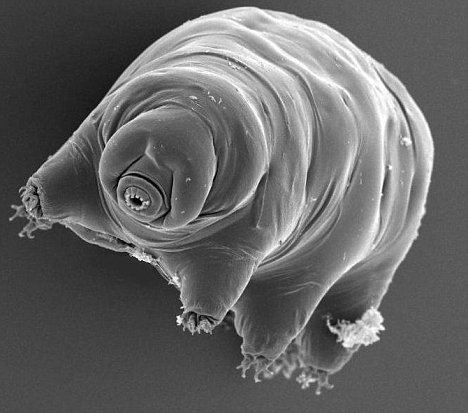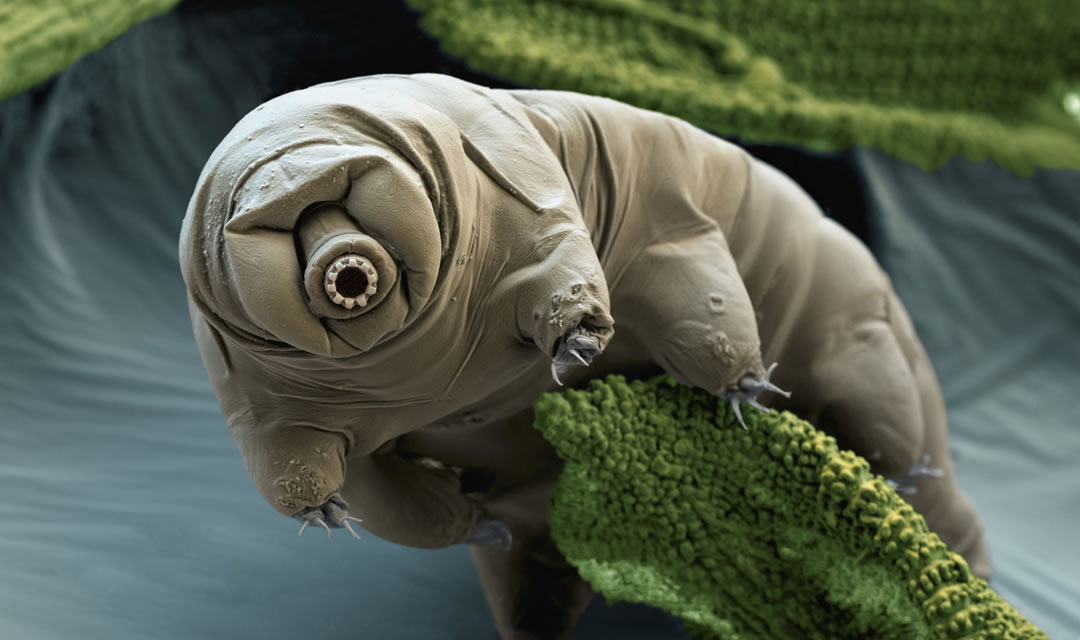Tardi-what?
Bugs can be cute, right? Caterpillars, ladybugs, and butterflies have a certain amount of appeal. But this tiny invertebrate has them all beat.
Meet the tardigrade, also known as a water bear, a moss piglet or a slow walker. Measuring anywhere from 100 micrometers to 1.5 millimeters, these unbelievably tiny invertebrates can be found in pretty much any habitat on Earth, ranging from marine and freshwater to the moist moss in your backyard.
They have four pairs of legs with claws on the end of each. These claws make them look like little bears, hence their most common name, water bears.
These tiny creatures can withstand not only the vacuum of space, solar radiation, gamma radiation and x-rays but also temperatures ranging from just below freezing to 120 degrees Celsius!
Teeny Tiny Extremophiles
What is an extremophile? It’s an organism that can survive the most extreme living conditions that would kill most other living things on Earth.
They can also enter a stage called cryptobiosis where they dry up, curl up into a ball, and create a hard outer shell, with the ability to stay like that for over 100 years.
When living conditions improve and they can rehydrate, they come back to life! Unbelievable!
Make friends with a tardigrade

A tardigrade (or water bear)
If you’d like to check one out for yourself, all you have to do is find some moss on a decomposing tree.
Put the moss in a shallow dish and soak it with distilled water for about 24 hours. Take your dish of water and moss and put them under a microscope.
Be patient, they are very small and their bodies are transparent, but eventually you will start to see a small caterpillar-like animal crawling around over the moss!
Winnie the Pooh has nothing on a water bear!
Written by Meghan Mitchell, Science Communicator at Science North
SCIENCE NORTH
The Science of Ripley’s Believe It or Not!
Ripley’s has teamed up with science centers around the country to bring you The Science of Ripley’s Believe It or Not!, a 6,000 sq. ft. highly interactive traveling exhibit.
Each week the staff scientists at the Science North are going to be blogging the scientific side of Ripley’s!
Discover more unbelievable facts at “The Science of Ripley’s Believe It or Not!®” 










Lampreys are pretty wierd or unusual. At least their mouths are. They resemble a really mean looking hole saw with many circular rows of teeth. As mean looking as they appear they appear they are harmless. It is a parasitic fish. They are all born in the ocean and eventually find themselves going up fresh water rivers and lakes thousands of miles
away from the ocean.
The first image I ever saw of a tardigrade was an electron micrograph blown up to fit the cover of a tabloid, where it was touted as a “Martian.”
[…] wasp, which can withstand 180,000 rads without any damage to their reproductive abilities. Water bears and certain types of bacteria can withstand up to 3,000,000 […]